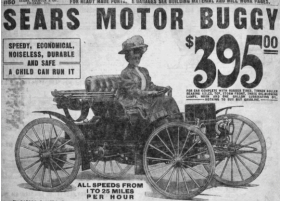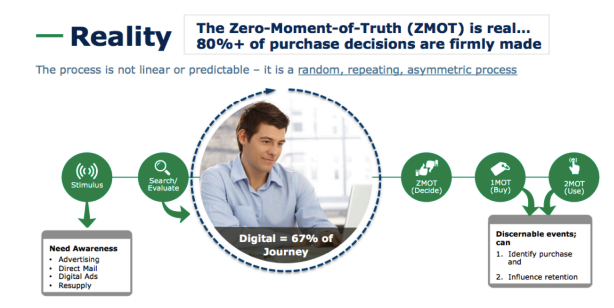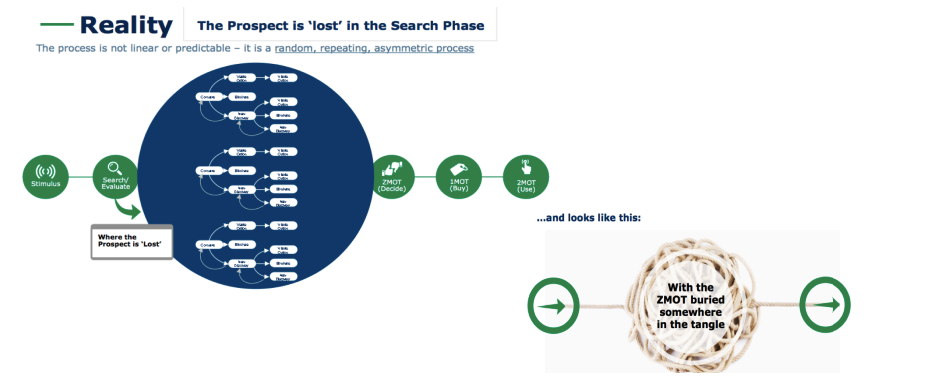The “Amazon” Before Amazon
It was the ultimate social media marketing force of the twentieth century—the Amazon of its day.
Starting in 1888, the Sears’ catalog had become known as “the consumer’s bible” across the mail order industry by 1906, influencing the behaviors of consumers through product accessibility and availability. It was a very linear marketing model supporting the simplicity of single-channel direct selling of everything from household goods to cars and even homes.
Mapping Madness
Today’s complex media ecosystem has given CMOs reason to begin mapping the consumer journey in an attempt to understand how customers interact at every point within the sales funnel. The recent hype around customer journey mapping has captivated the interest of data scientists and marketers alike who carefully document purchasing paths of consumers to identify key engagement points in the process. This can be a valuable exercise, but it is typically used to improve customer loyalty and retention. The customer experience, especially during the buying process, is a different matter.
Customer journey mapping is not a panacea, a “magic bullet”. Forrester published a brief last year entitled, “The Top Five Reasons Why Customer journey Mapping Efforts Fail.” In this study, researchers found that 63% of “customer experience professionals rely on journey maps to guide their efforts.” But at the same time, Millward Brown Digital found that 55% of senior marketers ndicated that they do not have confidence in their company’s ability to fully understand and influence the customer journey.
In the increasingly complex, always-connected omnichannel market, the number of consumer touchpoints during the search phase, is an infinite set of options…and it’s growing:
- More than 70% of consumers use 3 channels or more when researching a purchase (Blue Nile Research).
- In 2010, the average buyer checked 5 sources before making a purchase.
- By 2013, that number had grown to 12.
- In 2014, on average, more than 12 were used (Google / Inmar Study).
It’s not surprising that for many marketers, the task of documenting the experience results in nothing more than a large and often incomplete tangle of unconnected consumer perceptions and insights. These cloud the view for C-level executives, senior managers, and data scientists in their attempts to get a better look behind the curtain and dissect the Zero Moment of Truth (ZMOT). The end product becomes too complex to become actionable, and the prospect is ultimately lost.
It’s a Jumble Out There
The ZMOT—the way in which consumers seek information through multiple channels to arrive at a brand and product decision—may not be easily predicted with customer journey mapping data.
However, there are more prescriptive, data-driven solutions that insert retailers into this seemingly ambiguous jumble of analytics and insights to influence the buyer decision. Look for our next article to learn more.
About NovaLex Consulting:
NovaLex, Latin for “new plan,” is a strategy and marketing consultancy that assists companies seeking to ignite or accelerate growth. NovaLex combines art and science – deep data analytics for targeting with data mining for powerful creative branding to drive growth.
The proven methodology, blending hyper-targeting, advanced marketing technology and creative branding, places each
client’s brand in the consideration set throughout the customer journey. This forward-thinking approach ensures that our client’s brands are in the final consideration set to cost-efficiently generate more leads, conversions and growth.
NovaLex team members have won multiple American Marketing Association EFFIE Awards for sales effectiveness, a Gold Lion at the Cannes Film Festival and have elevated the business of every client served.
For more information, visit us at www.novalexconsulting.com or call 214-395-5153.Customer Journey Mapping – Why It Fails



